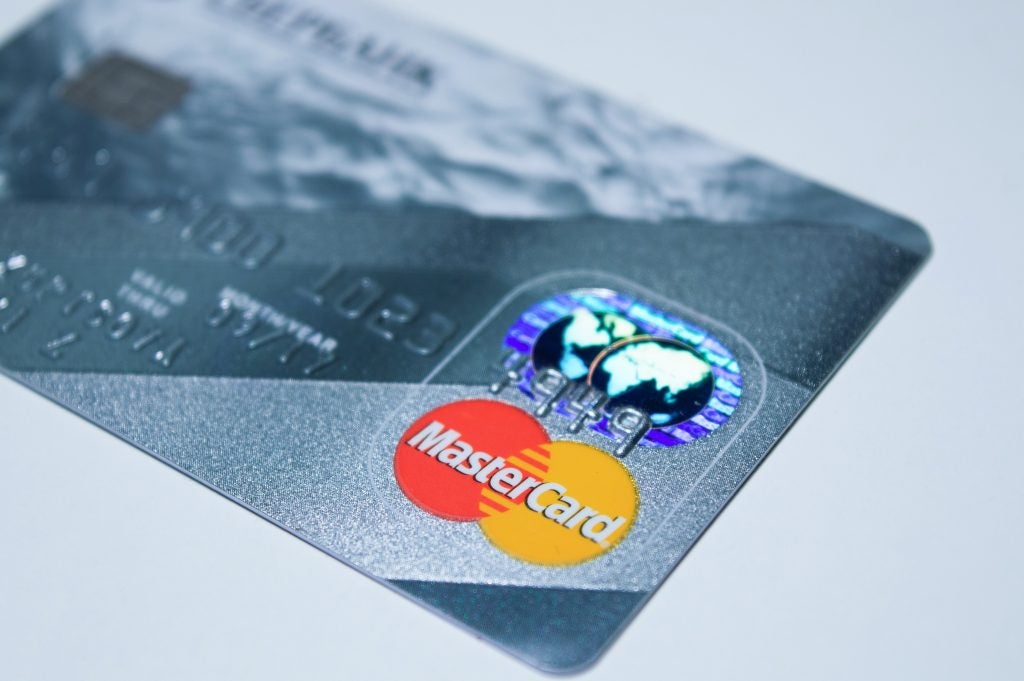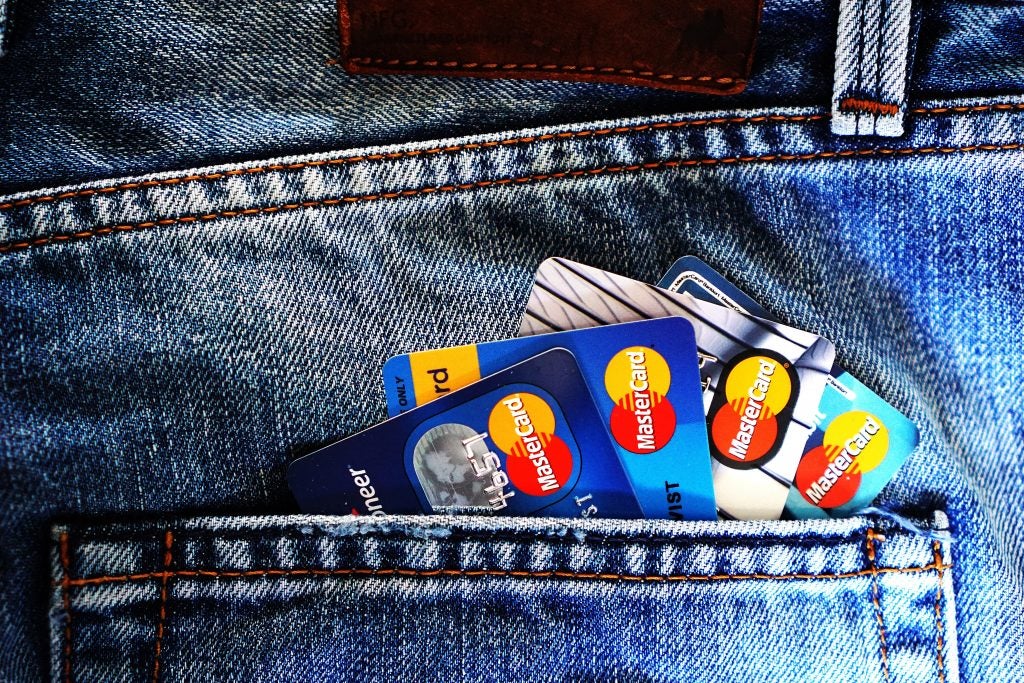Module 6: Finances (Part 4)
Using Credit Wisely
Introduction
Objective: The student will identify 5 best practices for using credit while in college.
This lesson is designed to help you distinguish between situations when it is okay to use credit and situations when it would not be advisable to use credit. Working through this lesson will enable you and your parents to discuss when using credit is the best choice for you.Estimated time 30-45 minutes
Materials included:
Materials needed:
- Internet access
Curriculum Link:
This section corresponds with Module 6 Lesson 3 in the STEPP Classroom Transition resources.
Learn About It

Definition of Credit
Credit is the confidence in a person’s ability and intention to pay for something later instead of immediately. A person with good credit can purchase something on credit, receive the item or service immediately, and pay for it over time.
Credit is basically a loan that has specific repayment terms and conditions. Sometimes this loan is between a person and a bank, as it would be if you purchased a house on credit. Sometimes the loan is between a person and a credit card company, as it would be if you used your Visa card to buy a sweater at a store. Regardless of the specifics, any time you make a purchase that does not require you to give your money to the person providing the item or service immediately, you are making a credit transaction.
Credit Cards vs. Debit Cards
The difference between credit cards and debit cards may not be immediately obvious to students, especially since many ATM/debit cards can also function as credit cards for making purchases. Here are the key differences between these types of cards.
A debit card (or ATM card) is linked directly to a bank account—usually either a checking or savings account. When you make a purchase with a debit card, the funds are deducted immediately (or within a reasonable processing period of a couple of days) from your account. Because you are using money from your own account, and it is being paid directly from your bank to the merchant at the time of purchase, there are no interest charges. (Some banks may charge a fee for debit cards or the accounts associated with them, but this fee is different interest and it would be reported separately on your bank statement.)
In contrast, a credit card is not directly linked to a bank account. When you make a purchase with a credit card, the credit card company pays the merchant immediately (or within a reasonable processing period). However, the credit card company is not paying the merchant with your money, because they do not have your money yet. Instead, they add the purchase cost to your balance, which you are only expected to make payments on once a month. As a result, you may be able to purchase an item with your credit card on March 3 but not actually need to part with your money until you pay your credit card bill on March 29.
Credit card companies also allow you to “carry a balance,” which means that you don’t have to pay off the entire credit card bill every month. Thus, if you purchase an item that costs $500 with your credit card on March 3, you may be able to pay only $50 on March 27, another $50 on April 27, etc. until you have paid off the bill. However, the balance will also include a certain amount of interest—usually a percentage of the balance added each month—so the total that you eventually pay will be greater than $500.
Usefulness of Credit
Credit is an extremely useful financial tool.
Some items that people need would be out of reach and unaffordable if they had to pay for them in full at the time of purchase. Examples include a house or a car. People can use credit to purchase these items when they are needed instead of trying to save up for a long time to purchase them outright.
A college education is another example of a great use of credit. Students can take out loans for their tuition and other college costs and pay this money back over time. Since a college degree allows many people to get a higher-paying job than they would be able to get with just a high school education, this is a long-term investment in their future earnings.
Credit is also useful for major, unexpected expenses that may arise, such as a hospital stay, car repairs, or travel expenses to attend a funeral.
It is especially useful to use credit on items that will appreciate in value. Houses and college educations are good examples, since their long-term benefits and value generally outweigh the investment of money and time that it will take to pay them off, including interest.
Top 10 Tips for Using Your Credit Wisely
Dangers of Misusing Credit

Credit can be a useful tool, but it can also be dangerous if misused. Although credit card companies and banks require people to apply for credit and try not to extend credit to people who are unlikely to be able to pay for their purchases, it is still possible to use credit to purchase things that you cannot truly afford. People who use credit to live beyond their means are setting themselves up for bigger financial problems in the future.
People who use credit cards to purchase things they cannot pay off within a reasonable time may get locked into a cycle of making only the minimum required payments. When you add in the interest rate the credit card company charges for the balance carried forward each month, you can end up paying an astronomically higher sum than the original purchase price.
If you miss a payment for any reason, the credit card company will likely report that information, which will negatively impact your credit score. (Your credit score is a numerical representation of the strength of your individual credit history. Your score reflects your payment history and the total amount of credit of all of the accounts you have had within approximately the past 7 years, along with a few other factors. Having a high credit score tells businesses who might give you credit in the future whether you have been responsible with credit in the past.) If your credit history is not strong, your credit score may prevent you from being able to open new credit accounts, get loans, rent apartments, make large non-cash purchases, or even land certain jobs where the employer checks credit score as part of the interview process.
Credit Cards and College Students
Credit card offers are often an inescapable part of college life. Students may receive information about credit cards they can apply for through mail or email, on displays at campus events, in college publications, on flyers in bookstore shopping bags, and more. Credit card companies often target college students because many of them have recently become old enough to sign up for a credit card without parental approval and are experiencing newfound freedom to spend their money as they choose without as much parental oversight.
Although credit is often readily available to college students, laws that went into effect in 2010 increased the regulation of credit card companies regarding extending credit to students under age 21 and marketing on college campuses. As a result, many college students still need someone to co-sign for their credit card application. A co-signer is an individual who agrees to be responsible for the debt incurred if the primary cardholder is unable to pay the bill. Parents are generally the ones to co-sign for a credit card when a student is in college. If you want to open a credit card account, it’s a good idea to talk to your parents beforehand about whether they are willing to co-sign for the card and what restrictions, if any, they will put on its use as a condition of co-signing.
Despite the risks, college can be an excellent time to get a credit card and begin establishing a credit history. If used responsibly during college, a credit card can help you to build a credit history that will contribute to you a stronger financial start by the time you graduate.
Surveys conducted between 2009-2012 have produced varied statistics about college students and credit cards. The sources of the statistics cited here are:
- “How undergraduate students use credit cards: Sallie Mae’s national study of usage rates and trends 2009.”
- Ludlum, M., Tilker, K., Ritter, D., Cowart, T., Xu, W., & Smith, B. C. (2012). Financial literacy and credit cards: A multi campus survey. International Journal of Business and Social Science, 3(7), 25-33.
- (Their sources, in turn, are the Federal Reserve, Joint Economic Committee, Sallie Mae, and TransUnion).
Surveys tend to agree that a large majority of college students have at least one credit card. In 2009, Sallie Mae found that 50% of students with credit cards have 4 or more cards.
Estimates about the percentage of students who pay off their credit card balance every month vary widely; however, most surveys have found that a majority (ranging from 42%-90%) carry a balance from month to month and are therefore paying interest charges on their purchases.
The average credit card balance of college students has skyrocketed over the past 15 years.
- 2002…$577
- 2004…$946
- 2013…$3,173
Money Management 101 for College Students
Best Practices

Before applying for any credit card, do some research and find out what your options are. Base your decision on an informed view of the credit card’s terms and conditions and the benefits or perks it offers. Cards marketed specifically to college students often come with flashy short-term incentives but have extremely high interest rates. Over the long term, you may be better off selecting a card that has a lower interest rate and/or other useful perks, even if it doesn’t come with the most exciting “freebies” when you initially sign up.
Consult with your parents while you’re looking for a card, especially if they need to co-sign for you.
Finally, read ALL of the “fine print” in the cardholder agreement before committing to the card. Although it may be tedious to read through all the legalese, it’s extremely important to make sure you understand the terms you will be held to by the credit card company.
Once you have a card in hand, set limits and stick to them. First, limiting yourself to one credit card is usually a good idea. Most college students don’t need multiple cards, and having only one card, one credit limit, and one bill to remember helps prevent racking up excessive debt. Also set limits on how much money you allow yourself to spend. Your spending limit does not need to be dictated by the card’s credit limit. Often, your credit limit will be higher than what you can truly afford to pay off within a reasonable amount of time. You may decide to limit your spending by reserving the card to only be used in certain situations, such as emergencies (e.g., plane ticket home for a parent’s illness), or for unexpected expenses (e.g., car repair), or for certain types of expenses (e.g., gas for the car, or online purchases).
It should go without saying that one of the most important things a credit card holder can do to use a card responsibly is to make payments on time. You are responsible for making the payment on time every month even if your statement or bill is lost in the mail or gets routed to your email spam folder. Be proactive about keeping up with your monthly payment due date, and check your account status if you haven’t received a statement a few days before it’s due.
When you purchase items using your credit card, the best practice is to pay off your balance in full each month within the “grace period” before the credit card company begins to charge interest on those purchases. Even when that isn’t possible and you have to carry a balance, it’s prudent to pay more than the minimum payment each month.
Using a credit card responsibly to start building a strong credit history means making smart choices about when to use the card and when not to. In the situations listed above, it may be more prudent to:
- Use a debit card instead;
- Use cash instead; or
- Reconsider whether to make the purchase altogether.
Situations:
- If an item is a “want” instead of a “need,” consider why you’re putting it on your credit card. If it’s because you’re using the card to build credit, and you know you have budgeted for the item and have the money to pay for it during the current billing cycle, it’s reasonable to go ahead with the purchase. If not, you may want to consider waiting until you have the cash to pay for it outright.
- In some situations, you might have to use a credit card for something you can’t pay off immediately. Some of these are actually excellent reasons to use credit, such as emergencies or unexpected but necessary expenses. Other situations may be reasonable expenses that you have planned for. For example, it may take you several months to pay off a credit card charge for a new computer, but you may have already budgeted the money for that expense to come from your job earnings. However, be cautious about charging items that you know you cannot pay for within a reasonably short timeframe. You never know when you may have an unexpected expense that would either put you over your credit limit or severely hamper your ability to pay your balance back down.
- If you are using your credit card to replace an item or service for which you already have a good alternative, it may be more prudent to wait until you can pay for it in full. Although the newest cell phone or a dinner out might be tempting, consider whether you’re reaching for the credit card instead of cash/debit because the purchase is actually not within your means right now.
- The last tip applies to all the others listed. Students can easily get in over their heads with debt simply by trying to maintain a standard of living that is beyond their means. Credit cards make it possible to purchase things that you don’t actually have the money for at the moment. Although they can be a great financial tool in some cases, it’s possible to slip into the habit of using the card to cover expenses that aren’t even a part of your budget, or to cover the additional expense of items that have exceeded their limit in your budget. Some college students find that a credit card allows them to dine out more often, purchase more or higher quality items (e.g., technology or clothing), spend more money on entertainment, and do other inessential activities. This all seems wonderful until the credit card bill arrives and the realization hits that they don’t have the money to pay down the balance. Some students wind up getting trapped in a cycle of charging even basic expenses but being unable to pay more than the minimum required payment each month. It is possible to avoid this by thinking twice before deciding to use the credit card in the first place.
Parents Chime In
Have your student interview 3 people about credit cards using the “Credit Card Advice Interview” worksheet. After he or she completes these interviews, discuss each interview together.
Have your student list at least 3 best practices from the lesson and at least 2 best practices that he or she learned from the interviews.
Objective Check
Have you accomplished today’s objective?
Objective: The student will identify 5 best practices for using credit while in college.
If so, congratulations!
If not,If not, review the best practices section and your interviews.
Digging Deeper
Consider developing a plan for using credit during college. Also consider researching and applying for a credit card. It is a good idea to practice using your credit card and paying off the balance each month before you enter college.
